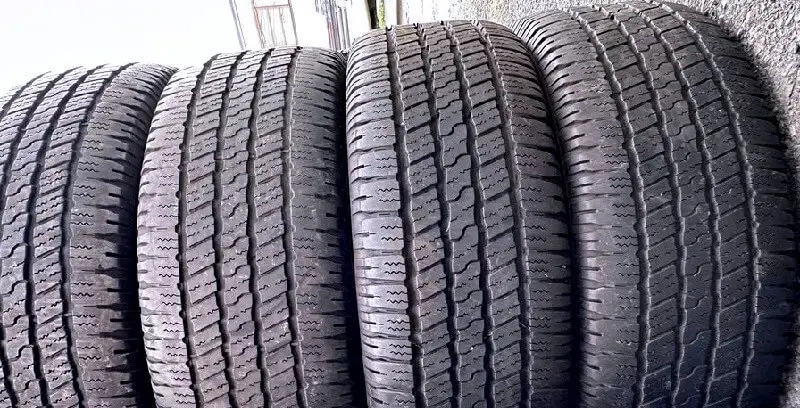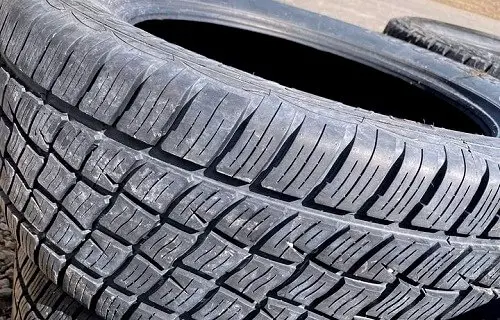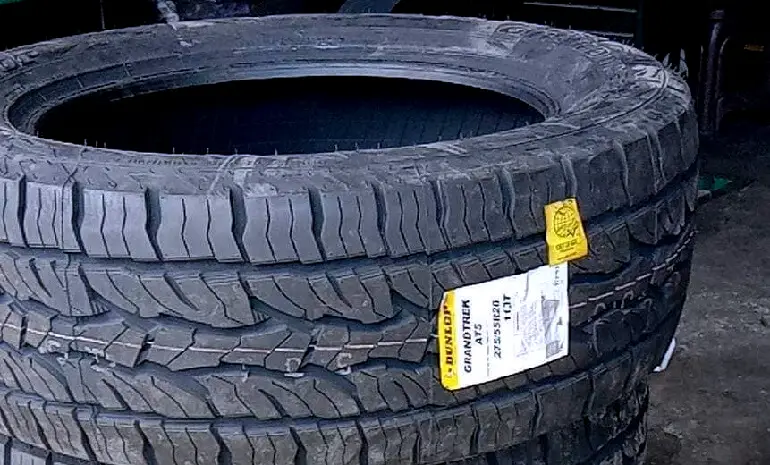225 vs 275 Tires

The main difference between 275 and 225 tires is in the section width. The tire size 275 is about 50 millimeters wider than the 225 tire size. This wider width can affect tire performance and appearance on the vehicle.
225 vs 275 Tires
| 275 Tire | 225 Tire |
|---|---|
| Lower Gas Mileage due to increased rolling resistance and rotational mass | Better Gas Mileage due to smaller contact patch and less rotational mass |
| More comfortable ride due to wider contact patch and taller sidewall | Less comfortable due to narrower contact patch and shorter sidewall |
| More aggressive, aesthetic appeal but may hinder aerodynamics | Contributes positively to aerodynamics |
| Improved stability and traction, especially off-road | Enhanced handling and quicker response on-road |
| May generate more road noise but dampens vibrations | Quieter on smooth roads but transmits more vibrations |
| Endures impacts but may cause more component wear | Potential for even treadwear and longer life |
| Larger contact area distributes weight better | Lower load capacity due to narrower size |
| Better traction in mud, off-road conditions | Can cut through snow/ice to reach road surface |
Gas Mileage
With a slightly smaller contact patch and less rotational mass, 225 tires generally confer better fuel efficiency, an aspect crucial for daily commuters and long-distance travelers.
The larger 275 diameter and width might detract from fuel efficiency due to increased rolling resistance and rotational mass. Larger tires with heavier weight give you less gas mileage.
Ride Comfort
The wider 275 tires generally offer a more comfortable ride than 225 tires due to their wider contact patch and taller sidewall.
Larger 275 tires give you better off-road performance compared to the 225 ones, but smaller 225 tires tend to provide better on-road performance.

Aesthetics
Smaller 225 tires contribute positively to vehicle aerodynamics, whereas larger 275 tires can offer a more aggressive and aesthetic appeal but may hinder aerodynamic efficiency. (65 words)
Handling & Stability
Smaller 225 tires typically offer enhanced handling and quicker response on paved roads. Conversely, larger 275 tires might present improved stability and traction, particularly in off-road scenarios or on uneven surfaces.
Noise & Vibration
Smaller 225 tires may provide a quieter ride on smooth surfaces but might transmit more vibrations from road irregularities.
Larger 275 tires, especially those with aggressive treads, might generate more road noise but could also dampen vibrations due to increased air volume and sidewall height.

Durability & Wear
Smaller 225 tires can potentially exhibit even wear and potentially longer tread life. Larger 275 tires, while potentially enduring more impacts and absorbing more stress, might introduce more wear to vehicle components due to their added weight.
Load Capacity
The load capacity of a tire increases with tire width. Since 275 tires are wider, they have a larger contact patch, which can distribute the weight over a wider area than narrower 225 tires.
The actual load capacity of a tire can vary depending on the tire’s construction and other factors.
Adverse Conditions
Smaller, narrower 225 tires can sometimes navigate snow and ice more effectively by cutting through to the road surface. Larger 275, extensive tires might provide advantageous traction in specific off-road or muddy conditions.

Difference Between 225 and 275 Tires
The main difference is the section width, with 275 tires being 50mm wider than 225 tires. This affects handling, traction, and fuel efficiency. Wider tires generally provide better grip but may increase rolling resistance.
Can I Use 275 Tires Instead of 225?
No, it’s not recommended to replace 225 tires with 275 tires. The ideal rim width ranges for these sizes don’t overlap, potentially causing fitment and performance issues.
Can I Use 225 Tires Instead of 275?
No, it’s not advisable to replace 275 tires with 225 tires. The ideal rim width ranges for these sizes don’t overlap, which could lead to improper fitment and compromised performance.

Can You Put 225 Tires on 275 Rims?
No, it’s not recommended to put 225 tires on rims designed for 275 tires. The ideal rim width range for 225 tires (6.5-8.0 inches) doesn’t overlap with 275 tires (8.5-10.5 inches), potentially causing fitment and performance issues.
Can You Put 275 Tires on 225 Rims?
No, it’s not advisable to put 275 tires on rims designed for 225 tires. The ideal rim width range for 275 tires (8.5-10.5 inches) doesn’t overlap with 225 tires (6.5-8.0 inches), potentially leading to poor fitment and compromised performance.
Our Observation
While 275 tires offer some advantages in traction, stability, and load capacity compared to narrower 225 tires, the 50mm width difference is slight enough that 225 tires can still perform well for most drivers.
The 225 provides benefits like fuel economy, handling, and wear, making them a better choice for the average on-road driver not carrying heavy loads.
Thus, we recommend sticking with 225-width tires for optimal overall performance for most day-to-day passenger vehicles.

Meet Caitlin McCormack, a Tire Size Expert and Blogger Passionate About Everything Related to Tires. With Years of Experience in the Tire Industry, Caitlin Has Become an Expert in Tire Sizes and Their Impact on Vehicle Performance.
